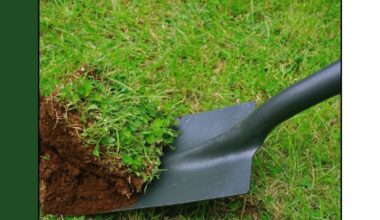We’ve all been there – wrestling with a stubborn rubber hose that refuses to bend without kinking. It can make even the most mundane tasks, like watering your garden, feel like an epic battle of wills! But don’t worry, I am here with some handy tips to help you keep your hoses in check and free from those pesky knots.
Imagine standing proudly in your lush green oasis, tangle-free hose in hand – doesn’t it sound liberating? With just a few simple tricks up your sleeve, this dream can become a reality. No longer will you be stuck untangling knots or trying to unkink blocked waterways.
Intrigued? Brilliant! Brace yourself as we venture into the world of ‘no-kinks’, where tension-filled tubes become pliable pathways and watering woes wash away… Dive further into this post and find out how to masterfully maintain flexible rubber hoses!
Selection of the Right Type of Hose

When it comes to preventing kinks in your rubber hose, starting with the right type of hose is essential.
Not all hoses are created equal, so choosing one that is specifically designed to resist kinking is a smart move.
Look for hoses labeled as “kink-resistant” or “anti-kink” for optimal performance.
Additionally, consider the diameter and material of the hose.
A larger diameter can help reduce water pressure and minimize the risk of kinks. Opt for a durable material like reinforced vinyl or rubber, which are less prone to twisting and tangling.
Understanding Hose Coiling Techniques
Proper coiling techniques can go a long way in preventing kinks in your rubber hose. Instead of haphazardly throwing your hose on the ground after each use, take the time to coil it neatly using specific methods such as figure-eight or over-under coiling.
These techniques distribute stress across the entire length of the hose and eliminate twists and tangles that often lead to kinking. By mastering these coiling techniques, you’ll not only prevent kinks but also extend the lifespan of your rubber hose.
Proper Storage and Handling of Rubber Hoses

Another crucial aspect when it comes to maintaining a kink-free rubber hose is proper storage and handling practices.
Avoid leaving your hose exposed to extreme weather conditions or direct sunlight for prolonged periods as this can cause it to become brittle and more susceptible to bending.
Instead, store your rubber hoses indoors away from direct sunlight, or invest in quality garden hose reels or storage containers designed specifically for this purpose.
These solutions provide a safe space where you can keep your hoses protected from damage while ensuring they remain easily accessible whenever you need them.
Utilization of Anti-Kinking Devices
For added insurance against kinks, consider incorporating anti-kinking devices into your hose setup. These simple yet effective accessories can significantly reduce the likelihood of your rubber hose bending or restricting water flow.
One such device is a hose guide. By installing these guides along your garden path or around corners, they help to prevent unnecessary strain and twisting on the hose, resulting in smooth water flow without any kinks.
Hose collar fittings are another useful accessory that adds stability and prevents unwanted kinks at the point where the hose connects to other equipment.
Maintaining Optimal Water Pressure in a Hose

Maintaining proper water pressure is crucial for preventing kinks in your rubber hose.
When using high-pressure sprayers or nozzle attachments, it’s important not to exceed the recommended pressure limits specified by the manufacturer.
Excessive water pressure can cause excessive stress on the walls of the hose, leading to deformation and potential kinking.
Regularly inspecting and maintaining your watering equipment will ensure that you always have optimal water pressure levels within safe limits.
Role of Water Flow in Preventing Kinks
Understanding how water flows through a rubber hose can also help prevent kinks from occurring. It’s vital to avoid sudden changes in direction when maneuvering with hoses as this disrupts smooth water flow and increases the risk of tangling.
Pay attention to any twists or bends forming while you’re using a rubber hose and adjust accordingly before they develop into full-blown kinks.
Maintaining steady movements helps keep the water flowing smoothly without encountering any obstacles that could potentially lead to troublesome knots along its length.
Tips for Unkinking Rubber Hoses
Even with all precautions taken, sometimes accidents happen, and our rubber hoses end up getting tangled into frustrating knots. Here are some tips for unkinking rubber hoses:
1. Gently Straighten the Hose
Start by gently pulling and straightening the kinked section of the hose to relieve any tension.
2. Apply Heat
If the kink persists, use warm water or a hairdryer to gently apply heat along the kinked area. The heat will help soften the rubber and make it more pliable, making it easier to work out any knots.
3. Use Lubrication
Applying a small amount of soap or vegetable oil on the tangled area can also help loosen up stubborn twists and allow for smoother untangling.
4. Detach Attachments
If you have any nozzle attachments or other accessories connected to your hose, remove them before attempting to unkink it. This makes maneuvering and untangling much easier without additional obstructions.
5. Seek Professional Help if Needed
In some cases where severe kinks are present, seeking assistance from a professional may be necessary. They have specialized tools and techniques that can effectively resolve complicated tangles while minimizing further damage to your rubber hose.
Conclusion
By following these tips on how to keep rubber hose from kinking, you’ll enjoy smooth flow every time you water your garden or clean outdoor surfaces without having to deal with frustrating tangles and disruptions in water pressure.


